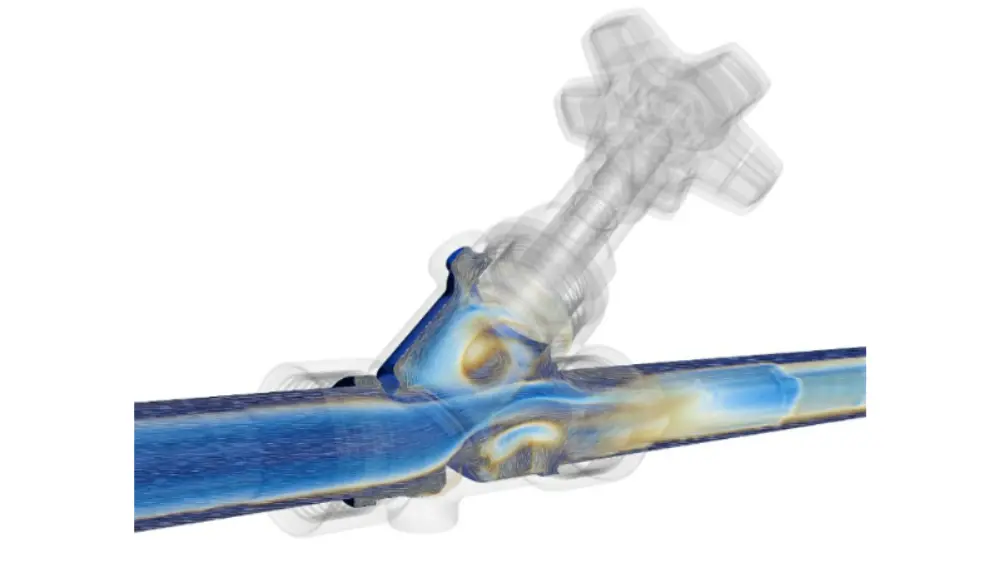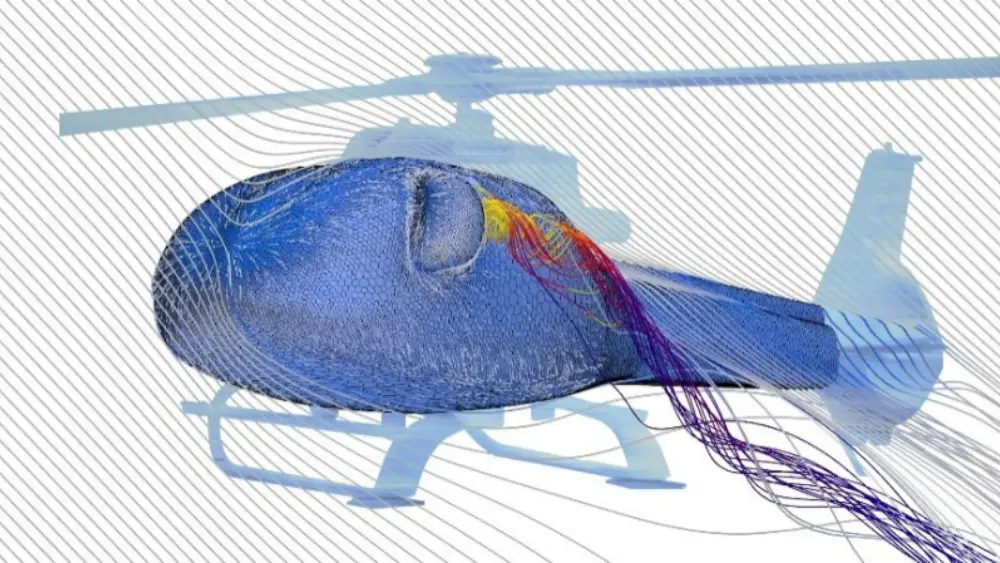Computational Fluid Dynamics
Streamlining product development using CFD
AeroFEM has successfully offered engineering services in structural mechanics and dynamics since 2002. In 2018, our portfolio was extended by offering CFD (Compuational Fluid Dynamics) services. Since then, we have helped a number of clients in aviation and other fields resolve several challenging CFD problems. We support multi-disciplinary projects from design to CFD and structural mechanics from a single source.
CFD is more than just aerodynamics – It can be applied to various engineering disciplines. The applications range from wind load calculations on building structures, optimization of heat transfer systems or mixing processes in multi-phase flow installations, just to name a few.
Often in structural design and related calculations, the question arises as to how aero- and hydrodynamic loads in flowing environments are best determined. Especially in situations where unconventional shapes and requirements can not be covered by regular standards, CFD is an efficient aid with respect to time and financial effort.
CFD gives insights not only for load calculations, but also to understand and improve complex fluid dynamic processes which are difficult to attain otherwise. CFD allows the user to evaluate a great number of parameters effectively which is highly useful when developing or optimizing prototypes and ultimately enables a significant reduction of time-to-market for any given product.
A common area of application for CFD is flows in systems where the calculation of mass flow distributions or pressure losses with or without heat transfer are of interest. A computational challenge resolved by AeroFEM is shown in the first figure.

Kontaktieren Sie mich für mehr Informationen
Oliver Ryan
MSc HSLU/FHZ in Engineering


The illustration shows a stream through a valve and visualizes the individual vortices and other turbulent regions. Such analysis allows the user to visualize qualitatively and quantitatively where the potential for reducing pressure loss can be found and where the most significant forces are acting on sensitive parts of the mechanism. The simulation approach allows a reduction in the number of experiments and can also reduce the number of prototypes necessary in product development.
The application of CFD for the evaluation of aerodynamic forces on aircraft is something we do regularly at AeroFEM. The second figure shows an EC130 Helicopter with a “bubble window” installation. The specialized window allows the pilot to look down vertically on the side of his aircraft when doing rope work. CFD was used to calculate loads on the window under various flight conditions covering important operating points in the flight envelope. The loads were then interpolated onto a structural model, which in turn was employed for the certification process of the newly designed window.
At AeroFEM, we use Simcenter STAR-CCM+ as the main CFD code, which is accompanied by the Simcenter 3D application suite. Both codes are provided by Siemens. STAR-CCM+ shines with its robust meshing algorithms and efficient work flow.
We relish new fluid dynamic challenges and work closely with our customers to address their needs and resolve demanding CFD-related design issues.
Support
AeroFEM supports you!
Contact us for sustainable exchange of knowledge. Or call us, our experts will gladly help you with your request.



